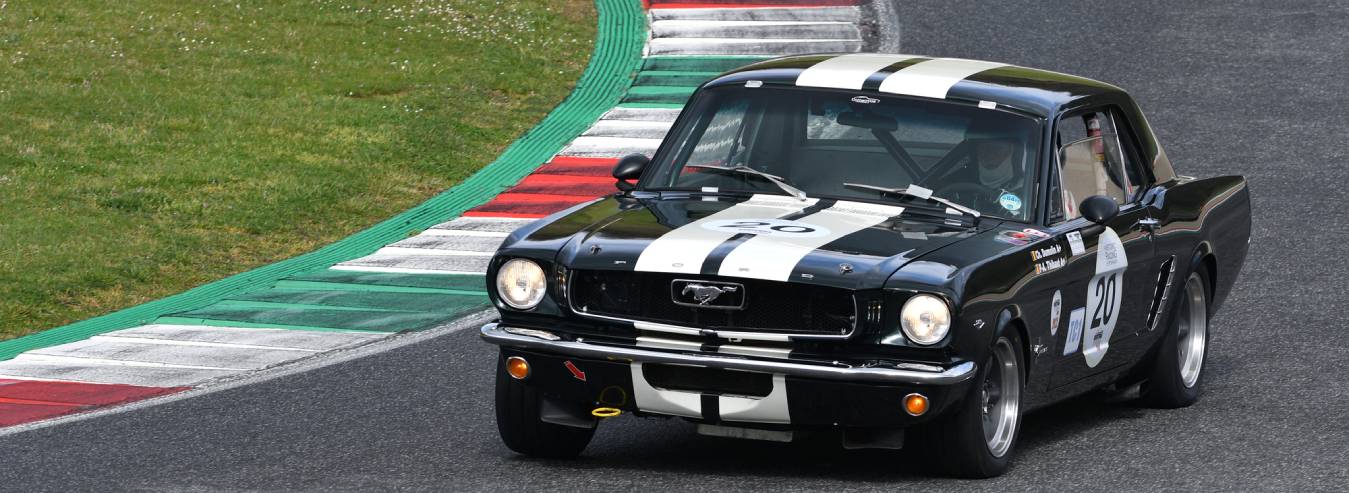Restoring a classic Mustang can be a rewarding journey that brings a vintage piece of automotive history back to life. Mustang restoration projects require careful planning, patience, and attention to detail to make sure your car looks great and runs reliably. Whether you’re a seasoned car enthusiast or a novice ready to take on your first project, this guide will provide you with a structured approach to reviving that piece of automotive history.
Define Your Restoration Goals
Before starting the physical work, take some time to consider the end goal for your Mustang restoration. Are you aiming for a full factory-original restoration, or are you planning on adding modern upgrades to improve performance and safety? Clarifying your vision will help shape the entire restoration process, from budgeting to selecting the right parts and accessories.
For example, if your goal is a show-quality restoration, you may focus on sourcing period-correct parts and maintaining the car’s original specifications. On the other hand, a restomod project might involve upgrades that enhance the car’s capabilities and modernize its look and feel.
Set a Realistic Budget
Budgeting is necessary for any restoration project, especially for classic cars, where part availability and quality can vary. Costs will depend on factors like the model year, the level of restoration, and the condition of the car at the start. Key elements such as wheels and tires, brakes, and engine components can add up quickly. Therefore, it’s vital to estimate costs accurately.
Be sure to account for unexpected expenses, as restoration projects often reveal hidden issues once work begins. Setting a realistic budget early on will help keep your project on track and prevent financial surprises.
Evaluate and Source Quality Parts
Once you have a clear plan and budget, begin sourcing the necessary Mustang parts and accessories. Top Flight Automotive provides a range of high-quality parts and accessories specifically for Ford models, including Mustangs, as well as classic models from Chevrolet, Dodge, and Pontiac. Whether you need performance parts or factory-style replacements, our catalog offers trusted brands like MagnaFlow, Hurst, and Scott Drake to support every aspect of your restoration.

Quality parts are necessary for a reliable, lasting restoration, especially for components that affect the car’s safety and performance. Start by prioritizing parts needed to the car’s function, such as the engine, suspension, and electrical systems. As you progress, you can focus on cosmetic components and optional upgrades that enhance your Mustang’s look.
Assess the Body and Frame Condition
A key step in any Mustang restoration is assessing the body and frame for rust and structural issues. Classic Mustangs are known for their rust-prone areas, especially around the wheel wells, floor pans, and door sills. Examine the entire body, including the underside, for rust or damage that may require welding or panel replacements.
Auto bodywork can be one of the more expensive and time-consuming aspects of a restoration. For that reason, always address any issues early on. Once you’ve repaired or replaced damaged areas, you can focus on painting and restoring the Mustang’s exterior to its original glory.
Revamp the Interior
The interior of a classic Mustang plays a significant role in its overall appeal and comfort. Restoring the interior may involve reupholstering seats, replacing carpets, restoring the dashboard, and installing new gauges or trim pieces. Focus on sourcing materials and components that are true to the car’s original design if you’re going for an authentic restoration.

If your restoration includes modern upgrades, consider adding features like sound-deadening insulation or an updated audio system for improved comfort and functionality. When replacing interior components, check if original parts are available or if high-quality aftermarket options are better suited to your vision.
Restore the Engine and Drivetrain
The engine is the heart of any restoration project. For that reason, guaranteeing it runs smoothly is important for a successful outcome. Begin by assessing the engine’s condition, paying close attention to wear on critical components. Depending on its condition, you may need to rebuild or replace parts like the pistons, bearings, or camshaft.
A well-maintained drivetrain will not only enhance your Mustang’s reliability but also improve performance. Focus on upgrading components like the transmission, differential, and exhaust system to match your restoration goals. Whether you’re aiming for a factory-original setup or a modified build, investing in the engine and drivetrain is key to a high-quality restoration.
Upgrade Suspension and Brakes for Safety
Upgrading the suspension and brakes is often necessary for classic cars. This is because safety is a top priority in any automotive restoration project. Original Mustang brakes may not meet today’s safety standards. Thus, upgrading to modern disc brakes or adding performance components can significantly improve stopping power. A suspension overhaul may also be required, particularly if you plan on enhancing the Mustang’s handling or stability.
Investing in high-quality suspension and brake components will make your Mustang safer and more enjoyable to drive. Additionally, these upgrades can provide the durability needed for long drives or occasional track days and enhance the car’s versatility.
Select Wheels and Tires That Match Your Vision
The choice of wheels and tires can dramatically impact the look and handling of your restored Mustang. Classic Mustangs often feature smaller, period-appropriate wheels, while modern restorations may use larger, performance-focused options for improved grip and aesthetics. Selecting wheels and tires that complement your Mustang’s style is an easy way to enhance both its appearance and driving experience.
Consider your restoration goals when choosing wheels and tires, as this will affect the type, size, and design you select. Period-correct wheels will maintain an original look, while aftermarket wheels from trusted brands can add a custom touch to your restoration.
Paint and Exterior Detailing
After addressing structural and rust issues, the exterior finish is a key part of making your Mustang restoration project complete. A fresh paint job will transform the car. It will give the car a new lease on life and showcase the effort you’ve put into the restoration. Classic Mustang colors, such as Wimbledon White or Highland Green, can capture the car’s iconic look, or you may opt for a custom color to make it unique.
Once painted, add exterior accessories like chrome bumpers, mirrors, and emblems to complete the classic Mustang look. High-quality exterior accessories will enhance the car’s appearance and make it stand out on the road.
Perform a Final Inspection and Tune-Up
Before taking your restored Mustang on its first drive, perform a thorough inspection to make sure all systems are functioning as they should. This includes testing the engine, transmission, brakes, lights, and interior features. A final tune-up, including checking the fluid levels and aligning the wheels, will guarantee the car is road-ready.
Double-check that all accessories are securely attached and in good working order. Conducting a comprehensive inspection will help you catch any last-minute issues. This confirms if your Mustang is both safe and enjoyable to drive.
Your Mustang Restoration: A Journey Worth Taking
Restoring a classic Mustang is a labor of love that requires dedication, planning, and a passion for detail. With the right parts, tools, and knowledge, you can bring your Mustang back to its original glory or create a custom restomod that reflects your unique style.
Top Flight Automotive offers a comprehensive range of restoration parts and performance upgrades for Ford, Chevrolet, and many other vehicles to support every step of your restoration. Contact us today and take the first step towards bringing your classic Mustang back to life.










Leave a Response